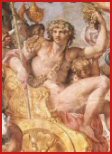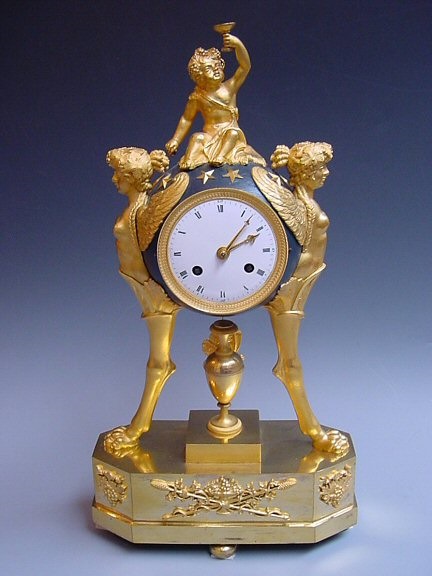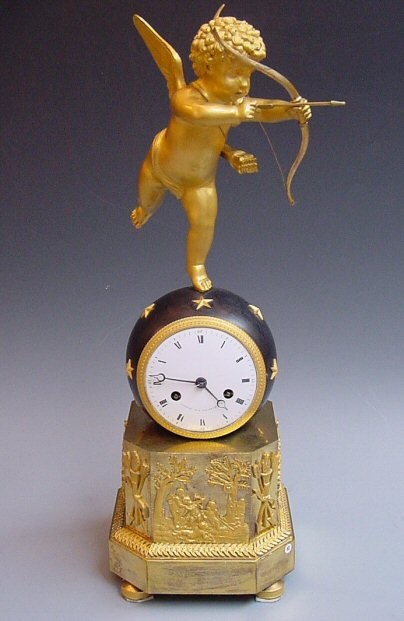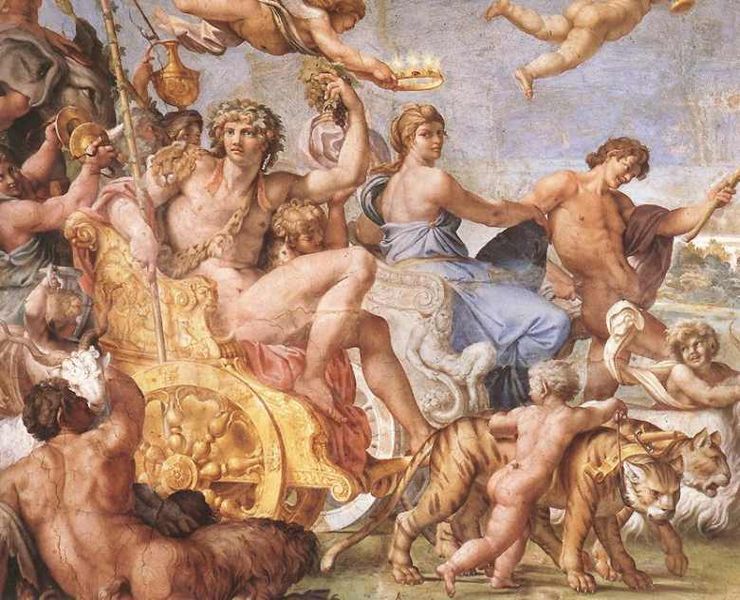|
This pages throw the light on a specifics item..
A clock that shows time and symbols.
A gilt bronze sculptural French Empire pendule circa 1810. A bronze
sculpture visualises nature, exaltation, fertility and not to forget
that time is precious.
A clock that embraces in symbols the world of wine, with Bacchus on
the star-time-globe, surrounded by wine women, grapevines and grapes.
In the base we see a wine goblet and two crossed thyrusses, each staff
crowned by a pine cone and tied on with ivy.
 |
Historical context:
Bacchus, the Roman name for the Greek god Dionysus, is the orgiastic
deity of bacchanalia, the religious wine festivals held throughout
the empire. Satyr plays portraying the regenerative powers of
Bacchus gave rise to Greek drama. His phallic staff or thyrsus
is crowned by a pine cone represents the human faculties of wisdom
and inspiration. His mount Scorpio was the zodiacal sign ascendant
during the time of harvest equinox and probably symbolizes Osiris,
the original god of barley brewing and ecstatic intoxication.
Standing Bacchus, from the Vatican Museum, carries grape clusters
in his panther skin cloak. Note his ram companions and ribald
expression.
|
A gilt bronze sculptural French Empire
pendule, Bacchus, circa 1810. SOLD
 |
|
Ormolu Empire mantel clock, a Cupid, by Griebel, Empire 1810.
SOLD

|
| |
|
|
 |
|
Spot on the deity AM
O R / CU
P I D
A gilt bronze Cupid - mantel clock.
Cupid (Latin cupido) is the god of erotic love and beauty. He
is also known by another one of his Latin names, Amor. He is the
son of goddess Venus.
In painting and sculpture, Cupid is often portrayed as a nude
boy or baby armed with a bow and a quiver of arrows.
On he clock thers also a scene with four nude young boys of witch
one is shooting his arroy to the heart wicht is hanging in a tree.
Caravaggio painting Amor Vincit Omnia - meaning "Love
Conquers All"
-, is an inspiring figure for later artist.
|
|
 SpotOnt:
SpotOnt:




